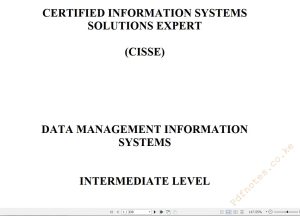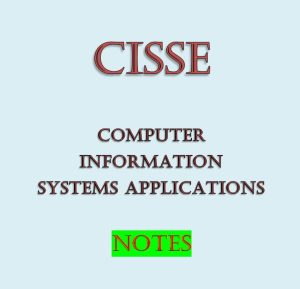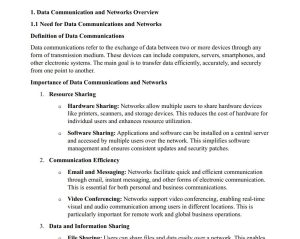Original price was: KSh800.KSh699Current price is: KSh699.
KASNEB CISSE FOUNDATION LEVEL NOTES
REVISED NEW SYLLABUS NOTES
Note: Study Notes come with FREE Past Papers (Year 2022 to December 2024)
Topics Covered:
Topic 1: Introduction to communication
Topic 2: Communication process
Topic 3: Written communication and visual communication
Topic 4: Verbal/oral communication
Topic 5: Non-verbal communication
Topic 6: Presentation skills
Topic 7: Planning and conducting interviews
Topic 8: Planning and conducting meetings
Topic 9: Report Writing
Topic 10: Technology and Communication
Topic 11: Ethics and integrity in communication
Topic 12: Ethical issues in Information Communication and Technology-ICT
Description
COMMUNICATION SKILLS AND ETHICS IN INFORMATION SYSTEMS
UNIT DESCRIPTION
This paper is intended to equip the candidate with the knowledge, skills and attitude that will enable him/her to communicate effectively orally and in writing as well comply with ethical requirements at both personal and professional levels.
LEARNING OUTCOMES
A candidate who passes this paper should be able to:
• Demonstrate written and spoken communication skills and ethics
• Use visual aids in written communication
• Prepare and deliver an oral presentation and a public speech
• Conduct interviews
• Apply ICT in report writing, editing and disseminating
• Plan and conduct meetings
• Present reports using power point presentations
CONTENT
1. Introduction to communication
1.1 Definition of terms and concepts used in communication
1.2 Internal and external communication
1.3 Formal and informal communication
1.4 Intrapersonal and interpersonal communication
1.5 Small group and public communication
1.6 Purpose of communication
1.7 Essential skills for effective communication
1.8 Benefits of effective communication
1.9 Factors contributing to the importance of communication
2. Communication process
2.1 key elements enabling communication process
2.2 Stages in the communication process
2.3 Principles of effective communication
2.4 Barriers to effective communication
2.5 Strategies for overcoming barriers to effective communication
2.6 Choosing a channel of communication
3. Written communication and visual communication
3.1 Sentence construction and paragraph development
3.2 The writing process
3.3 Business letters
3.4 C.V and cover letters
3.5 Memorandum
3.6 Circulars and newsletters
3.7 Forms and questionnaires
3.8 Advertisements and publicity materials
3.9 Posters and notices
3.10 E-mail
3.11 Visual communication#8211; graphs/charts/tables/diagrams/pictures
4. Verbal/oral communication
4.1 Meaning of oral communication
4.2 Importance of oral communication
4.3 Means of oral communication-face to face and telephone conversations
4.4 Effective listening-The listening process, principles of effective listening, listening techniques, barriers to effective listening
4.5 Persuasive communication- meaning, objectives, creating persuasive messages, approaches to persuasion
5. Non-verbal communication
5.1 Meaning of non-verbal communication
5.2 Importance of non-verbal communication
5.3 Forms of non-verbal communication
5.4 Effective use of non-verbal communication
5.5 Advantages and disadvantages of non-verbal communication
5.6 Barriers to effective non-verbal communication`
6. Presentation skills
6.1 Effective presentation skills
6.2 Audience analysis
6.3 Preparation and organization of an effective presentation
6.4 Structure of presentation
6.5 Public speeches
6.6 Use of visual aids in presentation
7. Planning and conducting interviews
7.1 Meaning of interview, interviewer, interviewee
7.2 Purpose of interviews
7.3 Types of interviews
7.4 Preparation for an interview
7.5 Conducting an interview
8. Planning and conducting meetings
8.1 Purpose of meetings
8.2 Types of meetings
8.3 Planning for meetings
8.4 Conducting meetings
8.5 Role of members in a meeting- Role of the chair, secretary and participants
8.6 Documents used in meetings- notice, agenda and minutes
8.7 Online meetings- Teleconferencing, video conferencing, webinar
9. Report writing
9.1 Meaning of reports
9.2 Purpose of reports
9.3 Types of reports
9.4 Structure and content of reports
9.5 Preparation for report writing
9.6 Writing, editing and dissemination of reports
9.7 Use of power point presentations
10. Technology and Communication
10.1 Role and impact of technology in communication
10.2 Communication networks- internet, intranet and extranet
10.3 Wireless technology
10.4 Websites
10.5 Blogs
10.6 Social media
11. Ethics and integrity in communication
11.1 Meaning of ethics and integrity
11.2 Significance of ethics and integrity in communication
11.3 Principles of ethical communication
11.4 Factors influencing ethical communication
11.5 Ethical dilemmas in communication
11.6 Handling ethical dilemmas in communication
12. Ethical issues in Information Communication and Technology#8211; ICT
12.1 Privacy and integrity of data
12.2 Manipulation of information- merging of information, repackaging information and altering information
12.3 Inappropriate use of data collected
12.4 Credibility and accuracy of information
12.5 Plagiarism
12.6 Other emerging ethical issues in ICT
12.7 Managing ethical issues in ICT




